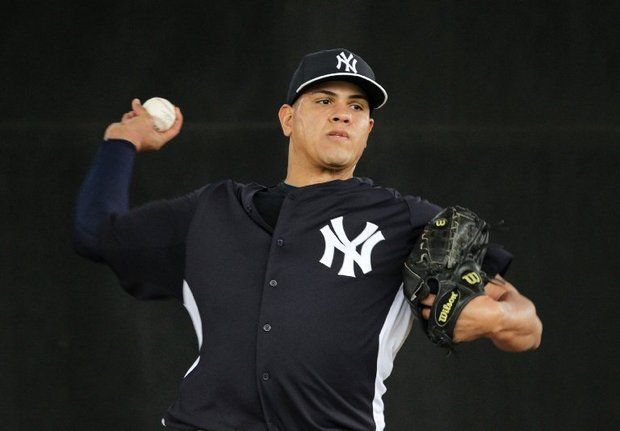During most of the NBA season this year, I wrote a weekly series called “NBA Trend Testing,” in which I would use the FantasyLabs Trends tool to create a custom trend and then track the results of my matches for the week. The goal is to create trends with high Plus/Minus values and share them with our readers. I will be doing the same thing during MLB season and will be posting an article every Friday which will review the past week’s custom trend.
Description
Targeting power hitters against groundball pitchers has not been an especially effective strategy in MLB DFS over the past couple of seasons. When you look at fantasy production against salary from this group, the results are about as average as you could possibly get – a Plus/Minus of +0.15 over 5,794 games. A HR/AB of .04 would set the minimum number of home runs around 20-25 over a full season’s worth of games. To verify the correlation, I tried slightly increasing/decreasing both filters and the overall Plus/Minus remained in the same range.
That doesn’t necessarily mean we should leave these pitchers alone, particularly in cash games. This week, I wanted to take a look at matchups where base-stealers faced off against groundball pitchers. By leaving the groundball rate the same as above and adding a “SB/game” filter, we can raise the Plus/Minus to +0.70
This Trend feels like it is going to be better suited for cash games, so I’m also going to include one filter that is a staple in my cash game trends for lineup order. Here is the final trend:
The filters used were:
• The player’s SB/game is between 0.2 and 0.5
• The opposing pitchers season GB rate is between 45 and 100
• The lineup order is between 1 and 5
Results
The following screenshots come from teams that I entered into one of FanDuel’s $5 GPPs throughout the week.
4/11
The Cardinals vs. Brewers game on 4/11 was a perfect example of what can go right in these types of matchups. Although Jeremy Hazelbaker did not record a stolen base, his four hits helps St. Louis dink-and-dunk Taylor Jungmann to death to the tune of 10 runs with ZERO home runs. Hazelbaker’s ownership level was high, for good reason, since it seems like his salary on FanDuel was increasing at a snail’s pace. But with this performance, he was still a staple in both cash and GPP formats despite elevated ownership.
The other match was Dee Gordon vs. Matz. I couldn’t find Dee on any of the rosters that I checked, and I checked a ton of them, meaning he was very low-owned in this matchup. My guess is that we’ll see lower ownership levels throughout the week, Hazelbaker notwithstanding, as many DFS players hunt for home runs. Anyway, Dee did steal a base in the first inning and we all know what happened to Matz after that.
4/12
On Tuesday, two of the three matches exceeded their implied point total, with Delino DeShields scoring 15 fantasy points and Dee Gordon scoring 12. The three players combined for only one stolen base, and Dee Gordon’s stolen base actually came against the Mets bullpen rather than Syndergaard, the starter. DeShields’ Rangers blew up Wade Miley, to the tune of eight runs, and I feel like teams are less likely to force steals when they are way ahead.
Altuve was a bit of a disappointment since he was available under $4,000 and five percent ownership. He had zero hits against Kris Medlen and was only on base once.
4/13
On Wednesday, we benefited from a little bit of dumb luck. In targeting players whose value doesn’t depend on power in matchups against groundball pitchers, I was rewarded with a homer from Altuve against Yordano Ventura at three percent ownership.
The two other qualifiers, Billy Hamilton and Dee Gordon, both underwhelmed in their matchups. We were unable to find a single stolen base using the trend on 4/13. Altuve’s game was nice, but we aren’t going to find many home runs using this trend overall.
4/14
Another day goes by where we were unable to find a stolen base. In fact, it’s another day where we lucked into a home run that we weren’t looking for. Without the two homers from Hazelbaker and Altuve, this week probably looks pretty bad overall. As we’ll see in just a moment though, the trend did okay for itself this week. DeShields’ ownership was somewhat elevated, but I am guessing that was due to players wanting to stack against Chris Tillman, who was one of the weaker pitchers on the smaller evening slate.
Conclusion
In all, we were able to find four stolen bases this week in the 10 games that matched for this Trend. Of those same 10 matchups, our players exceeded their implied point total in six. From a fantasy points perspective, I think the results more or less were in line with what you could expect in a typical week using this trend. The raw stats themselves were skewed by a few surprise home runs that we benefited from throughout the week.
This trend didn’t necessarily do well because we were targeting stolen bases against groundball pitchers. Instead, the idea was that we were targeting batters whose value is not as dependent on power, since we would expect power hitters to struggle against groundball pitchers. You could attack these pitchers from several different angles and I will probably revisit the topic in a future article.












